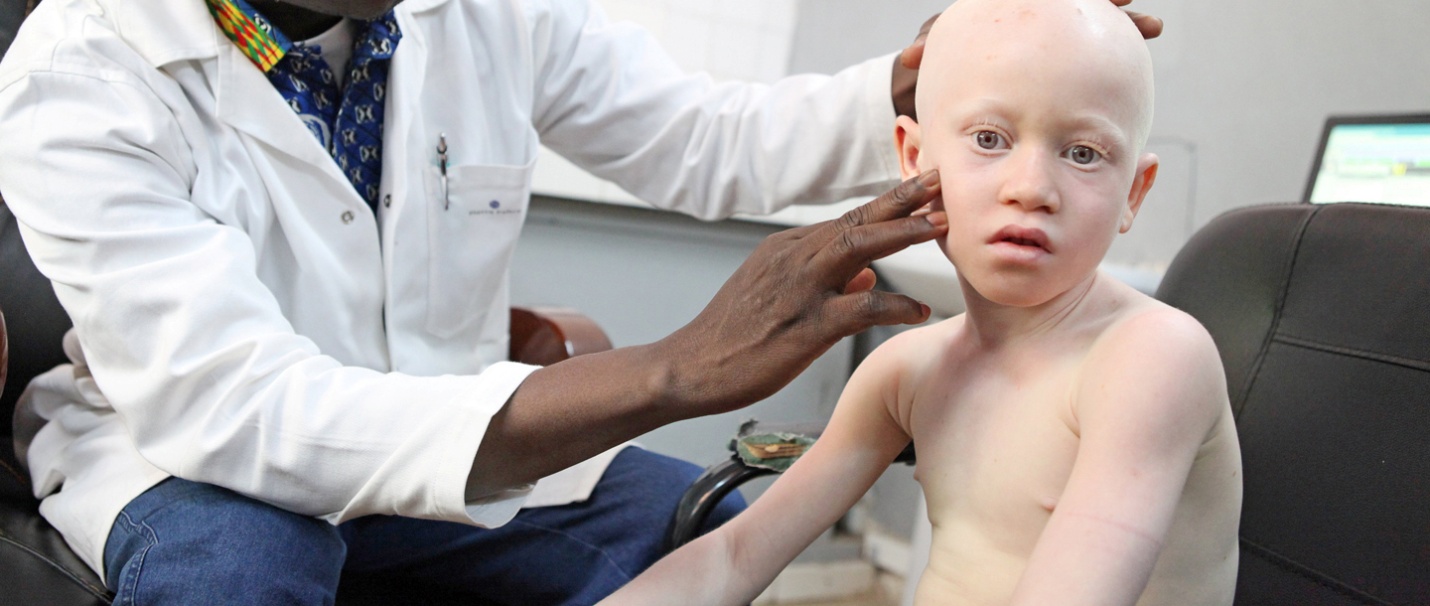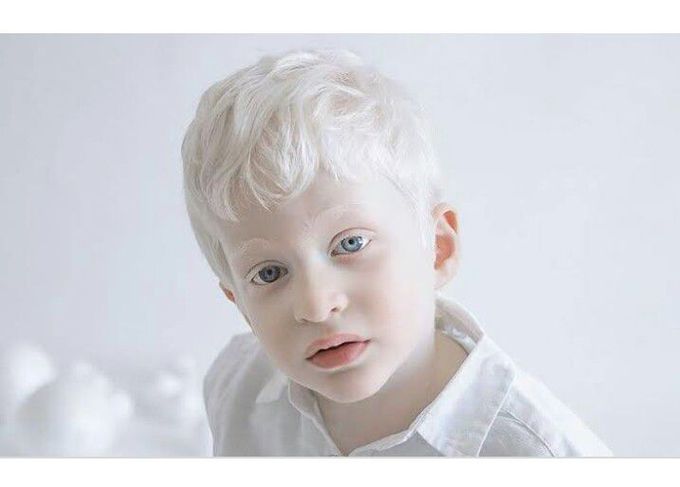Albinism
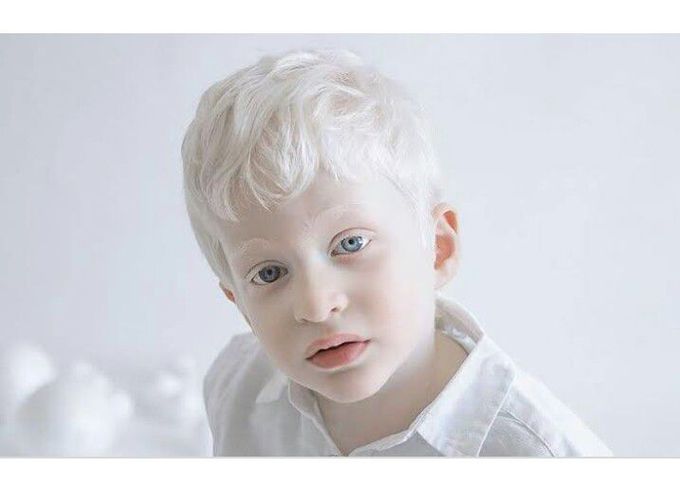
What is it?
Albinism belongs to a group of rare genetic diseases in which the skin, eyes and hair are colorless. Vision is impaired in albino patients. National Albinism and Hypo pigmentation Organization did a survey and concluded that approximately 1 in 18,000 people in the US have some albinism type.
Albinism usually known as oculocutaneous (OCA) is a type of genetic diseases that produces decreased melanin or no melanin at all.
People with albinism are called albino and are very sensitive to sun exposure, and also they are more prone to cancer of skin. Although albinism is incurable, albino patient should practice various preventions to protect skin and eyes and improve their vision.
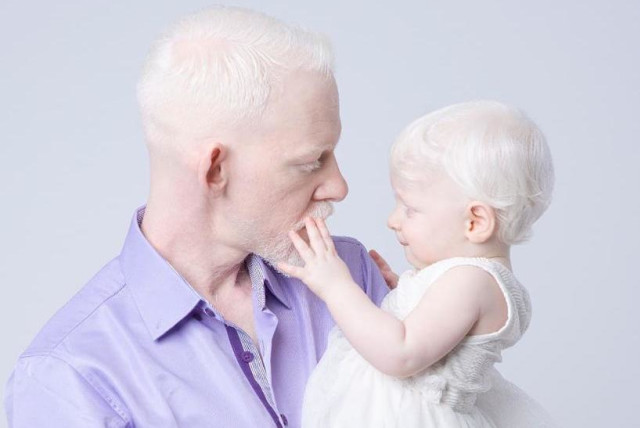
Types of Albinism:
Various genetic defects are characteristic of many forms of albinism. However, there are following types of albinism:
- OCA or Oculocutaneous albinism
- Hermansky-Pudlak syndrome
- Ocular albinism
- Chediak-Higashi syndrome
- Griscelli syndrome
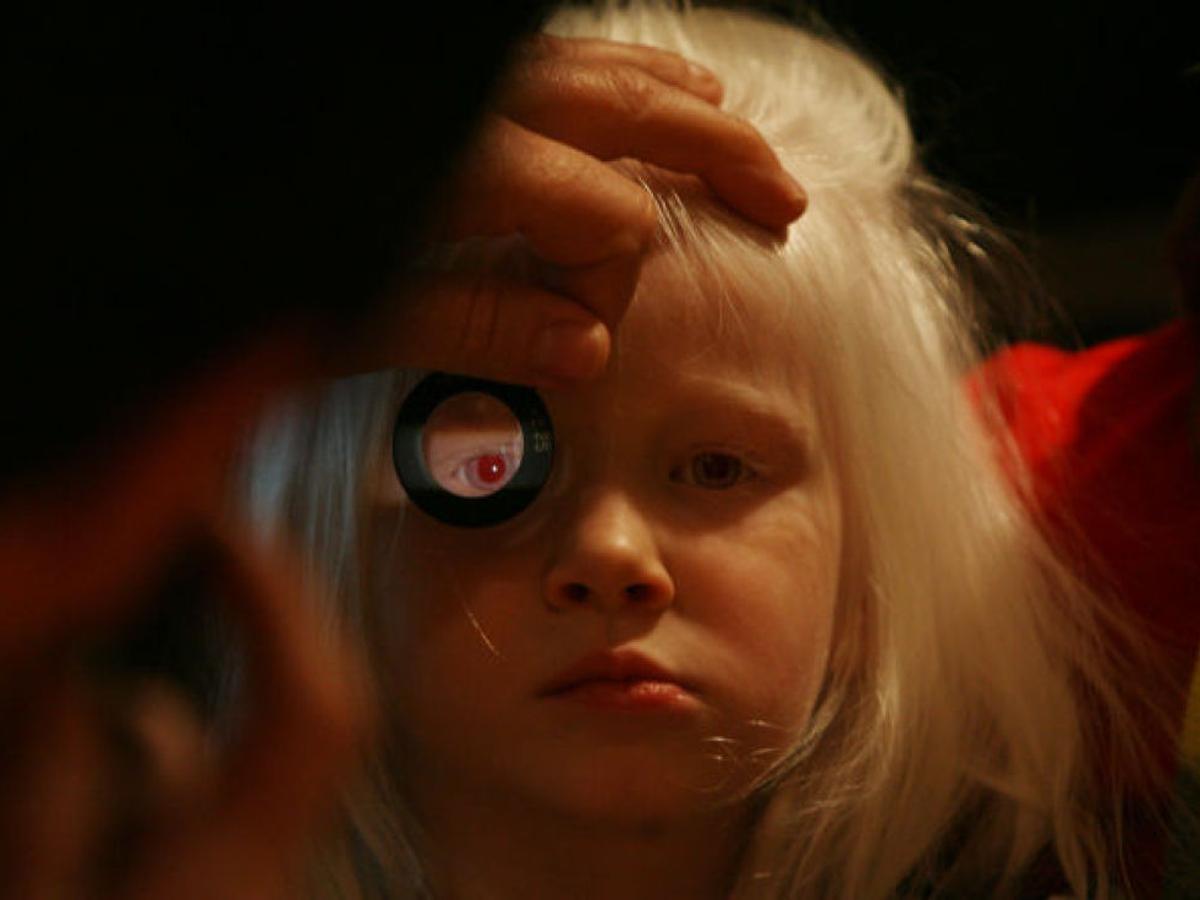
What are causes which leads to Albinism?
Melanocytes are the specialized for melanin production, which are found in the hair, skin and eyes. Defect in the genes that are responsible for production or distribution of melanin can cause albinism.
This defect can lead to insufficient production of melanin or a decrease in the melanin production quantity. Defective gene is passed from parents to their child and predispose to albinism.
Albinisms may be of different types, depending on the genetic mutation that causes the condition.
What are the symptoms associated with Albinism?
- Skin: Compared with siblings, the widely occurring type of albinism is gray hair and color of skin is light. Pigmentation of skin and hair color may vary from brown to white, and can be similar to the color of normal parents and siblings. Sunlight can cause some people:
- Sunburns
- Large spots
- Inability to tan
- Moles are usually pink free from pigmentation
In some albino people, skin pigmentation does not change at all. For others, the production of melanin may start or it may be enhanced in childhood and adolescence, leading to minor pigmentation changes in person.
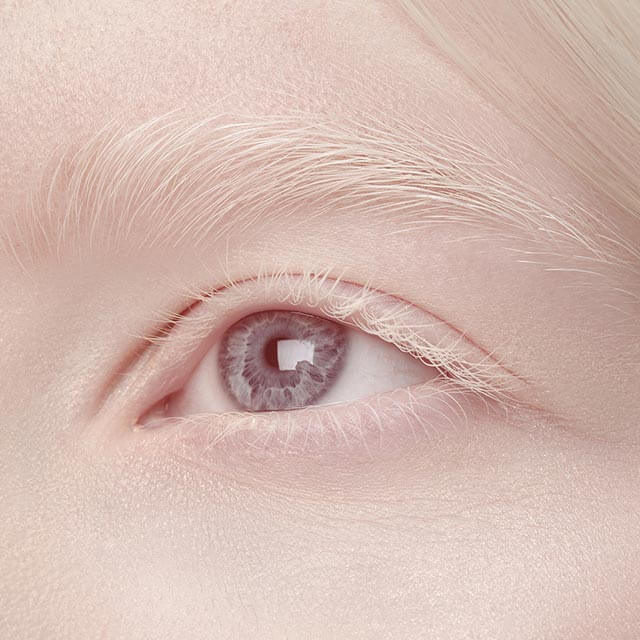
- Hair: The color of the hair ranges from pure brown to white. People of Africa or Asia with albinism may have yellow, red, and brown hair. When exposed to water and common minerals in the environment, hair color can also darken or change color in early adulthood. And it looks darker with age.
How to prevent albinism?
If someone in the family is suffering from albinism then one must consult counselor who can guide in the understanding of the types of albinism and the likelihood of your unborn child will have albinism. He can guide about the corresponding tests.
How to diagnose albinism?
Albinism can be diagnosed as follows:
- Check the medical history of child, including whether he/she has bleeding history, frequent bruising or accidental infection.
- Physical examination, including checking hair and skin pigmentation.
- Compare pigmentation of your child with pigmentation of family members.
- Comprehensive eye examination.
- Genetic counseling can help in the determination of type of albinism and its pattern of inheritance.

What is the right time to see doctor?
- If the doctor finds that the lack of pigment in the hair or skin is affecting eyelashes and eyebrows when your baby is born, your doctor may order an eye exam and closely monitor pigmentation and vision of your child for any changes.
- If your child shows any signs of albinism, consult doctor as soon as possible. If your albino child often has nosebleeds, bruises easily, or has serious infections, see your doctor.
Treatment Strategies:
Since albinism is a genetic disease, there is no cure for it. The focus of treatment is proper care of eye and monitoring of abnormalities of skin.
Care team may include PCP and doctors who specialize in ophthalmology ophthalmologist, genetics and skin care doctor dermatologist.
Treatment strategies usually include:
- Eye care: It includes examination of eye done annually by doctor and possibly wearing prescribed lenses. Usually surgery is not advised in treating clinical conditions of eye associated with albinism, but doctor may advise surgery on the visual muscles to reduce nystagmus. Surgery is done to correct strabismus can make this situation less obvious.
- Skin care and cancer prevention: It includes annual skin examinations for skin cancer or any lesions that may cause cancer. A severe skin cancer called melanoma may show pink patches of skin.
